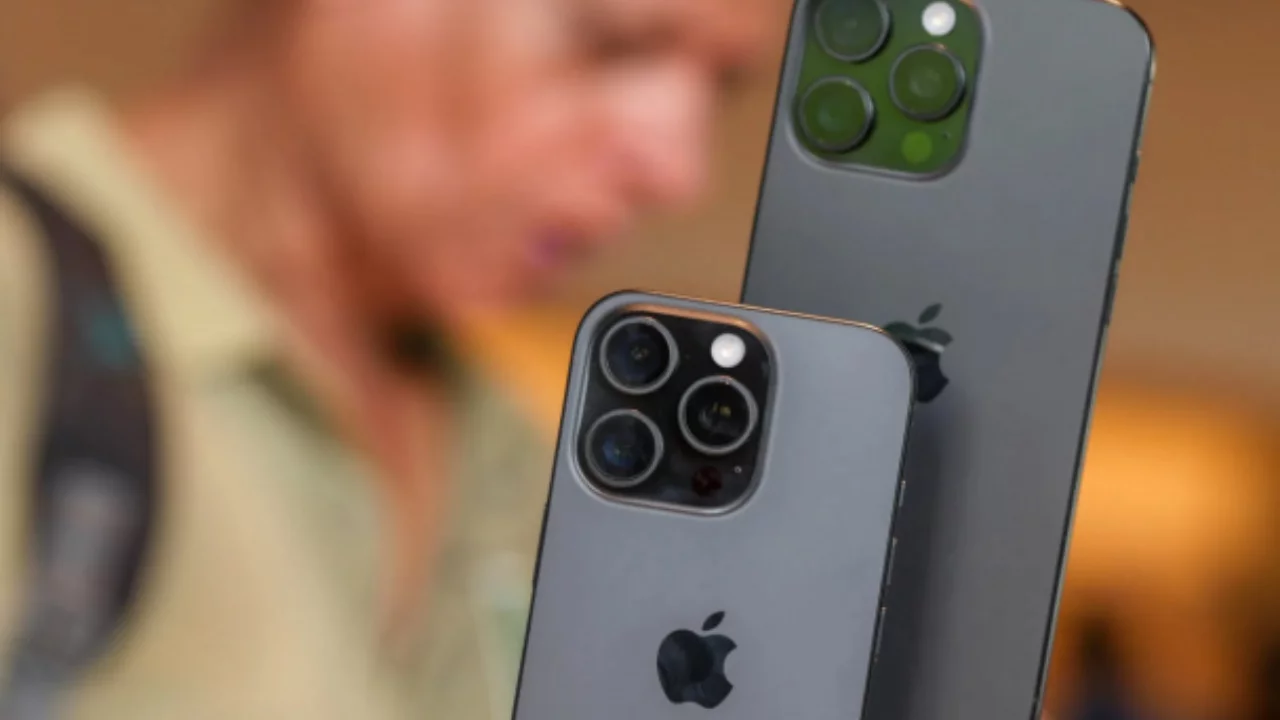
Data coming from major retail points across the country show that high‑end mobile devices—especially the new generation iPhone line—are getting more expensive fast. This trend points not to religious or political factors but to a bundle of financial pressures tied to customs duties, registration, and supply‑chain strain, reported kun.uz.
In roughly the past thirty days of tracking, noticeable extra costs have appeared across every configuration of the new iPhone 16 lineup. Store staff attribute the increase not only to demand but also to new restrictions on how goods enter the country.
The figures were gathered from shops located in the popular “Malika” shopping complex. Prices for both traditional SIM and e‑SIM variants were compared there.
As of 20 Jun the base iPhone 16 with 128 GB of storage was about 769 dollars. The same model with 256 GB cost 919 dollars. That’s our starting point.
On that date the iPhone 16 Pro 128 GB variant was logged at 1009 dollars. 256 GB at 1139 dollars. 512 GB at 1399 dollars. 1 TB at 1549 dollars.
The iPhone 16 Pro Max that day cost 1239 dollars at 256 GB. 512 GB was 1439 dollars. 1 TB was 1679 dollars.
By 20 Jul the picture had shifted. The iPhone 16 128 GB climbed to 849 dollars. 256 GB reached 999 dollars. A sharp move.
At the same time the iPhone 16 Pro 128 GB rose to 1139 dollars. 256 GB to 1279 dollars. 512 GB to 1499 dollars. 1 TB to 1699 dollars.
The Pro Max 256 GB moved up to 1399 dollars. 512 GB to 1629 dollars. 1 TB to 1799 dollars. That’s a substantial difference in one month.
From the tables you can see the base iPhone 16 is up about 9.5 percent, or 80 dollars. Don’t rush to call that “small.” In the core segment, 80 dollars weighs heavily on the average ticket.
Across the iPhone 16 Pro line the increase is about 10 percent. Depending on storage tier the add‑on ranges from 100 to 150 dollars. That’s premium‑segment pressure.
On the Pro Max the rise is higher still—about 10.8 percent. Depending on storage, the extra runs from 120 to 190 dollars.
Prices that another shop in “Malika” posts on social media were also reviewed. The 22 Jun to 22 Jul stretch shows a similar pattern.
In that second data set, the iPhone 16 rose roughly 8 percent, or 70 dollars. The iPhone 16 Pro about 10.8 percent, with 130–150 dollars added by storage.
Over the same period the Pro Max climbed about 10.7 percent. Storage adds 120–190 dollars. Two independent samples reinforce the trend.
Analysts indicate the upward track began in the second half of June. Receipts before 20 Jun were more stable. Then a step‑by‑step climb started.
Several factors are pushing prices up. The first big one: sharply lower duty‑free import limits. This rule took effect 1 May.
Under the new thresholds, the personal goods allowance for air arrivals fell from 2000 to 1000 dollars. For those arriving by train or other land transport it dropped from 1000 to 500 dollars.
So bringing in an expensive device from abroad is no longer as easy as before. Anything above the limit attracts a customs duty. Costs add up.
Take an example: an iPhone 16 Pro Max bought abroad for 1200 dollars. If you declare it at entry, duty is calculated on the 200‑dollar portion above the 1000‑dollar allowance.
At a nominal 10‑percent rate that would be 20 dollars, but sellers say some posts sometimes compute from the full item value. They report inconsistencies in the procedural explanations. For that reason some mention having paid about 60 dollars. Figures are being logged differently. We await clarified official guidance.
In parallel there is a separate UzIMEI payment. Right now that’s about 75 thousand soms. It’s an integral step in mandatory registration.
If no declaration was filed on entry, the problem grows. Later, during IMEI registration, if the device isn’t found in the customs database a 30‑percent duty can apply.
Under that scheme a 1200‑dollar device would incur 360 dollars. Add 75 thousand soms for UzIMEI. The total ticket spikes sharply.
A private traveler who carries in a new SIM‑equipped device without declaring it is essentially taking a risk. Later registration can bring heavy costs. Sellers worry about this too.
Rules introduced in Oct 2024 tightened things further. The IMEI code is cross‑checked with the customs database. Personal import channels are squeezed.
When the new rules were announced, kun.uz wrote that the impact could show up at two levels. We’re now tasting that soup, so to speak.
Scenario one: if personal data misuse is blocked, the entrepreneur must import the device officially. That means full duty, full tax, full UzIMEI. Each handset’s landed cost goes up.
Back to the 1200‑dollar example. A 10‑percent duty is 120 dollars. A 12‑percent VAT adds another 144 dollars. Subtotal about 1464 dollars. Plus 75 thousand soms for UzIMEI. In dollar terms each line isn’t huge alone, but together the load is real.
The merchant adds profit. Logistics cost exists. FX spread exists. Store rent exists. Thus the price tag on the shelf ends up higher.
Scenario two: the seller fails to get official registration done on time. The buyer waits a week or a month. If registration lags, the customer may have to pay the 30‑percent duty personally.
In that case the buyer faces an unplanned 360‑dollar outlay (on a 1200‑dollar base). Converted locally, that’s serious money. Don’t forget the extra 75 thousand soms.
Given that risk, customers either pay a “guarantee premium” on top of price or hunt for alternatives. That also raises psychological pressure in the market.
Other supply‑chain factors are in play. There are rumors of trimmed allocations. Some resellers say new batches are limited. These reports aren’t yet officially confirmed.
Currency movements matter too. Small swings in the dollar ripple strongly through pricey imported goods.
Retailers say demand hasn’t slumped despite recent heat. Shoppers are intrigued by updated cameras, batteries, and AI features. When demand holds and supply is tight, prices climb.
Mismatches between online sales channels and warehouse balances create confusion. Listed in stock online, missing in the back room—or the reverse. That adds a “risk premium” into pricing.
Warranty differences between registered and unregistered devices are real. Officially registered units cost more. The seller prices in risk.
Combo versions with traditional SIM plus e‑SIM draw their own demand. Certain import channels are short on specific variants. Scarcity breeds a premium.
Color matters too. Retailers say the “natural titanium” series is more requested. Where demand is strong, the sticker rises faster.
Storage size pushes the spread wider. 1 TB versions arrive in smaller quantities. Low supply invites high markup.
Installment/credit sales change how price feels. Some customers pay in parts. Shops load overall risk into the upfront or bundled price.
To hedge FX risk a retailer may use an “internal rate” above the official exchange. The buyer sees it in the final bill.
Rising monthly rent, payroll, and utilities push upward. These costs get covered through margin on high‑liquidity items. Premium smartphones are exactly such items.
Hence swings of several hundred dollars can occur over short spans. The seller survives. The buyer pays more.
As personal import routes shrink, the hand‑to‑hand gray flow thins. Competition from the informal market eases. Official channels gain more room to set prices.
Reports say border control has tightened. Phones in bags no longer sail through. Declarations are demanded more often.
When declarations are required, numbers get exposed. Exposed numbers auto‑feed duty calculations. Automated calculation shows up directly in price.
Some people have quit bringing in devices through friends because of the risk. Another squeeze on supply.
When so many factors line up in one direction, you get a single result: the shelf price rises. That’s exactly what we’re seeing.
Store staff promise customers: “We’ll handle the IMEI registration.” How realistic is that promise? If it’s delayed after purchase, who pays?
Buyers are starting to demand paperwork: receipt, invoice, registration number. That’s a healthy trend. Transparency pressure disciplines pricing.
When costs are openly itemized, the customer understands. When they aren’t, trust erodes. In a low‑trust market, sales fall.
That’s why some shops now list all taxes and duties separately on the receipt. Handy. The customer sees. Ask and you get an answer.
Let’s do a sample calculation. If a 1200‑dollar device enters officially: 120 duty, 144 VAT (subtotal 1464), plus 75 thousand soms UzIMEI. Suppose the shop adds a 100‑dollar margin: about 1564 dollars. Only an example. Actual figures vary by transaction.
In this environment customers search harder for competition. They price‑check multiple stores. They compare in group chats.
Comparison drives adaptation. One shop may run a thinner margin for turnover. Another does the opposite. The market finds its level.
In recent days online listings more often carry labels like “IMEI fully official,” “duty paid,” “12‑month warranty.” That’s an attempt to rebuild buyer trust.
Even at a high price, clarity calms nerves. Some people prefer an expensive but clear price to a suspiciously cheap one with murky status.
Prestige matters in the premium tier. Someone buys as a wedding gift. Someone needs the device for work. The handset’s provenance matters.
Will the rise continue next month? Open question. If customs policy stands and supply stays tight, a drop seems unlikely.
A softer FX rate or promotions could trim prices a bit, but as long as official cost loads remain, the base floor probably won’t return to old levels.
What should buyers do? First: insist on official documents. Second: verify IMEI registration. Third: confirm whether duties and taxes are included.
If you plan to bring one in yourself, run the numbers. Crossing the 1000‑dollar air allowance? File a declaration. Delays cost dearly.
When choosing a store, weigh service and support. A cheap but unregistered phone can become a big headache a month later.
Retailers are adapting to the new rules too. It’s a trial for them as well. Honest players will win customers back over time.
We’ll gather fresh data in coming weeks. We’ll track price moves. If new regulations emerge we’ll let you know.
Reminder: some figures from various sources have not yet been fully confirmed by official bodies. Costs may differ by outlet. We’ll update as new information arrives. Read “Zamin” on Telegram!
Ctrl
Enter
Found a mistake?
Select the phrase and press Ctrl+Enter Related news
Information
Users of Меҳмон are not allowed to comment this publication.
Users of Меҳмон are not allowed to comment this publication.













